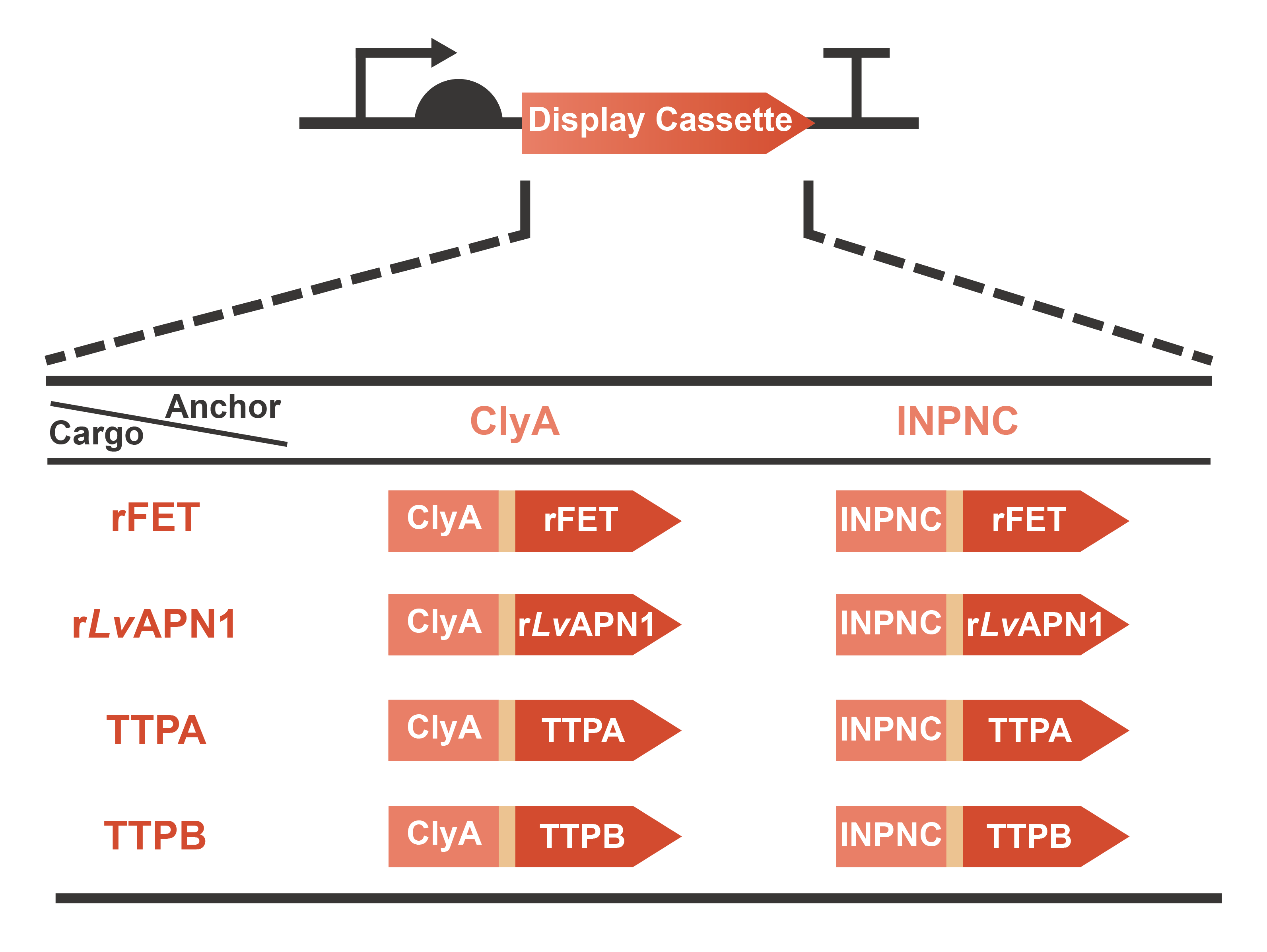Part:BBa_K4195022
INPNC-ttpA
Biology
INPNC INPNC is a truncated form of ice nucleation protein (INP) consisting of N- and C- terminal domains (1). It is a membrane protein commonly used to displayed protein on the cell surface (2). TTPA TTPA is the phage tail tubular protein A of podophage 7. TTPA can interact with Vp0980, which acts as the receptor of TTPA on the surface of Vibrio parahaemolyticus. TTPA’s binding to Vp0980 mediates phage absorption and subsequent bacterial lysis (3).
Usage and design
Engineering OMVs for treating and preventing AHPND caused by the pathogen V. parahaemolyticus are a significant part of OMEGA project (No part name specified with partinfo tag.perable No part name specified with partinfo tag.agic to No part name specified with partinfo tag.fficiently No part name specified with partinfo tag.etting over No part name specified with partinfo tag.HPND). Based on the efforts of our previous projects in 2020 (AnTea-Glyphosate) and 2021 (SALAGE), we further developed the surface display system on the OMVs released by the engineered bacteria. The usage of cargo proteins was no more limited to enzymes that are usually utilized to catalyze series bio-chemical reactions, since some receptors or ligands involved in complex protein-protein interaction (PPI) were selected as the cargo candidates. This year, we chose two classic anchor proteins, ClyA and INPNC, to construct the display cassette with various cargo proteins including rFET (receptor), rLvAPN1 (receptor), TTPA (ligand) and TTPB (ligand) (Fig. 1). On one hand, with the receptors displayed, OMVs will gain the function of neutralizing toxins secreted by V. parahaemolyticus. On the other hand, with the assistance of ligands displayed on the surface, OMVs will become a special vector to deliver antimicrobials for the specific pathogen. In summary, we have taken a step closer to the collections of extracellular functional elements (EFE), combining the OMVs, secretion systems and surface display systems which we have been dedicated to since 2020. Learn more information from our Design page.
Fig. 1 Graphic description of the expression gene circuits for display cassette designed in OMEGA project.
Sequence and Features
- 10COMPATIBLE WITH RFC[10]
- 12COMPATIBLE WITH RFC[12]
- 21INCOMPATIBLE WITH RFC[21]Illegal BamHI site found at 330
Illegal XhoI site found at 927 - 23COMPATIBLE WITH RFC[23]
- 25INCOMPATIBLE WITH RFC[25]Illegal NgoMIV site found at 72
Illegal NgoMIV site found at 706
Illegal NgoMIV site found at 964
Illegal AgeI site found at 1492 - 1000COMPATIBLE WITH RFC[1000]
| None |

